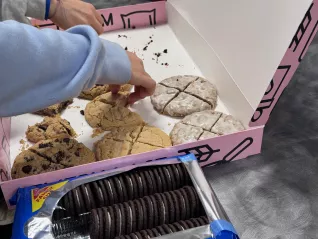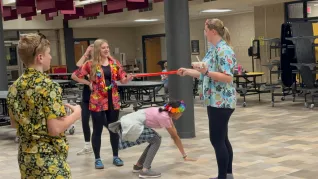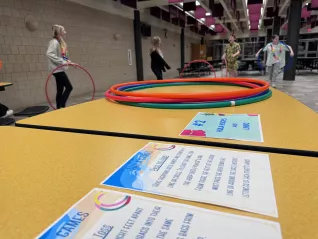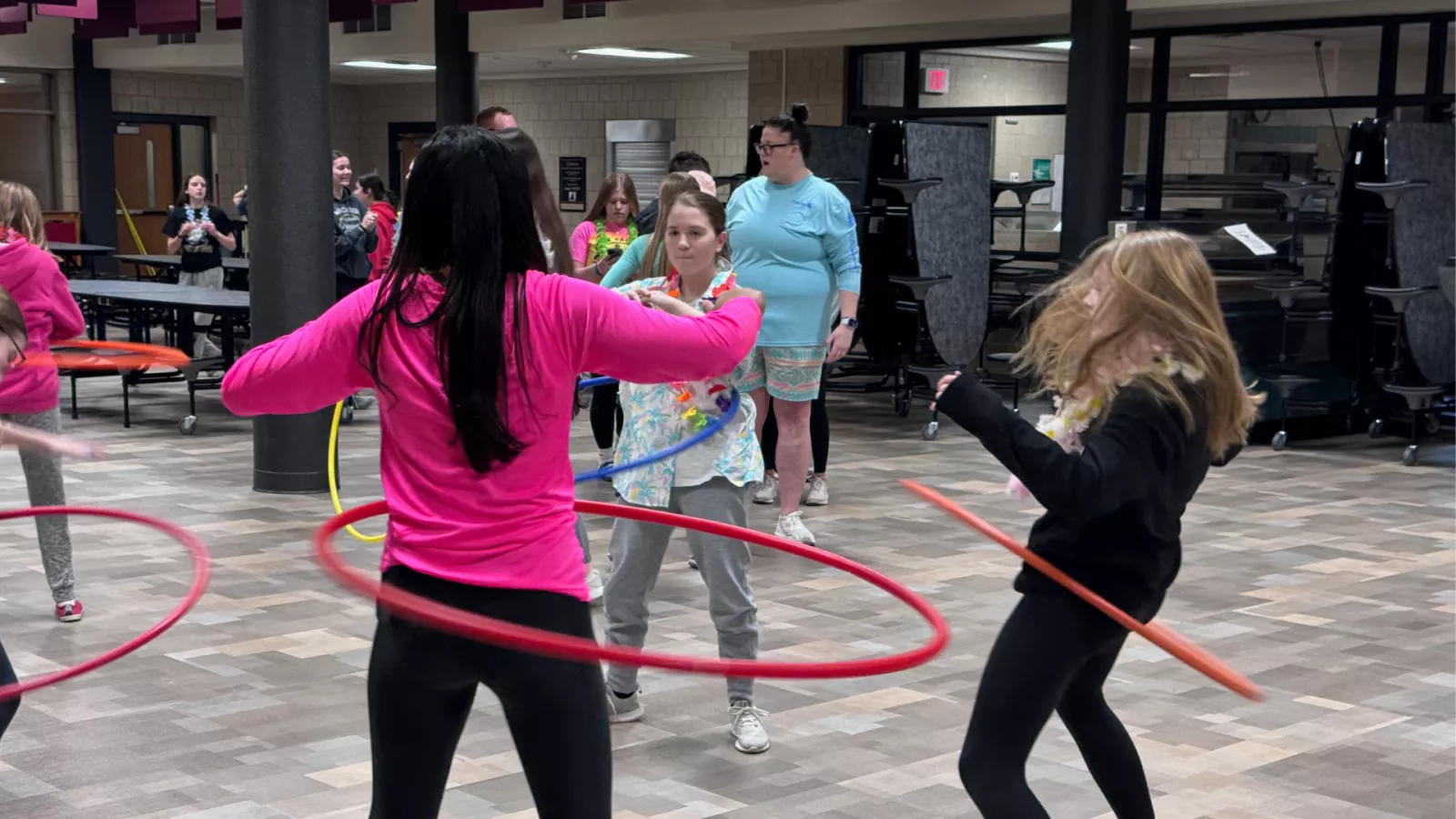Fostering Acceptance and Support: The Rise of Peer to Peer Programs
One program that is growing in prominence, both in the state of North Dakota and nationally, is called Peer to Peer. The American School Counselor Association has taken the position that “peer support programs help students develop an improved sense of well-being, social confidence and health behaviors.” Additionally, the group defines peer support programs on its website as “peer-to-peer interaction in which individuals who are of approximately the same age take on a helping role, assisting students who may share related values, experiences and lifestyles.”
Roughly two years ago, the principal of Wachter Middle School in Bismarck, Lee Ziegler, approached his school’s physical education teacher, Sheila Peterson, with an idea of implementing a Peer to Peer program.
Quote bySheila Peterson , Physical Education Teacher, Wachter Middle School
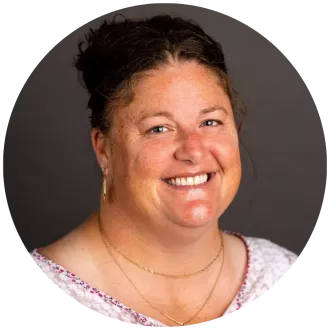
With her administrator’s blessing and support, Peterson started building Wachter’s program by consulting some local experts. Primarily, she reached out to Sara Bohrer, a special education teacher at Century High School in Bismarck. Bohrer started what was probably the first Peer to Peer program in this area at Century in 2015. She explained how it got off the ground in a podcast interview with North Dakota United in 2019:
“The idea came from a group of parents, administrators and teachers, sitting down and around a table together, just talking about how can we get our students with disabilities more involved in our school day and outside the school day?” Bohrer said. “And how do we not just make high school a place to be from 8:30 to 3:30, but how do we make it a family?”
Like Bohrer’s program at Century, the Peer to Peer at Wachter is available to students as a course for credit. Students with disabilities are selected for possible inclusion as “mentees,” and the school works with each student’s parents closely to make sure the program is a good fit for their child. Each mentee is matched with a mentor student, who are selected based on their record as a student.
“I worked with Sara Bohrer, and … she had a syllabus, and so she shared that with us,” Peterson said. “And one of the biggest things was, if not, why not? And then, show up and keep showing up. When you get kids to think about those things, if not, why not? If this person can't do this, why not? How do we help them? And then, hey, I'm going to take that uncomfortableness and anxiousness that you might have, and I'm going to tell you, I'm going to show up for you. I'm going to be your friend. You don't have to work for it.”
In the two years that Wachter has offered Peer to Peer, the program has grown from 30 mentors and 30 mentees at its start to 45 mentors and 45 mentees this current semester. Peterson said she’s taken a lot of pride in seeing that growth in the number of students who are actively asking to be mentees and paired up with a mentor.
“Peer to Peer, right now in my career, has probably been the biggest thing that's made, I hope, an impact not just for my mentees, but also my mentors,” Peterson said. “Getting kids to understand that the world is bigger than ourselves. And I've learned from my own students about servant leadership, their willingness to do what's best for others and to make life better. That's the big motto we have. It's Mwai Kibaki, he has the quote, ‘Leadership is a privilege to better the lives of others.’ And so that's a big focus.”
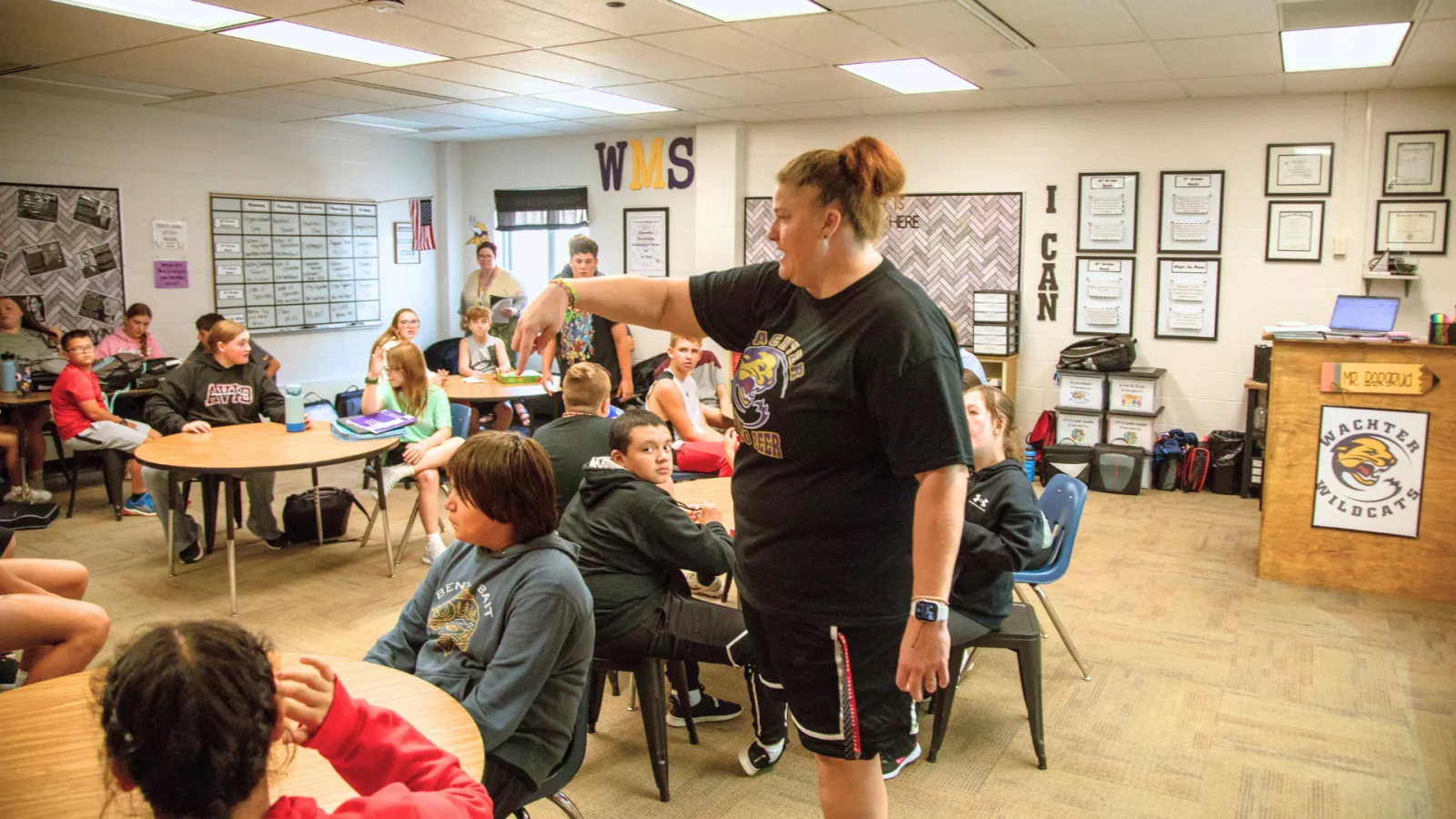
Peterson recently worked with Peer to Peer program advisors from Simle and Horizon Middle Schools in Bismarck to plan an “I Hate Winter Party” for students from all three schools to get together and participate in activities together. The event was hosted at Simle on Wednesday, Feb. 21, and Peer to Peer participants from the three schools together did things like hula hoop, play volleyball and other sports in the gym, arts and crafts, play board games, and ate cookies and ice cream.
Tami Doppler, a physical education teacher and the Peer to Peer coordinator at Horizon, said that her school had offered their program for students the last five years, but this year was her first year teaching and leading P2P.
“I think we have 20 mentors and 25 mentees,” Doppler said. “We do two days there in the gym for one class period, and two of the days they're doing daily living in the special education area. … I kind of like that model of being in the gym. At Wachter, I think they go into the classroom with the kids, into any of the classrooms, and ours don’t go into the classroom with their kids. The mentors or the mentees come into the gym together and do physical activity things, or they go into the special ed area and do daily living stuff.”
Two students from Wachter, Grace Peterson and Nya Davis, talked at the winter party about their experiences with the Peer to Peer program. Grace, a seventh-grader, said she first heard about Peer to Peer during the summer school program and thought it sounded like fun. “Yeah, I just heard about it through my teachers and my friends, and I was excited because I never did anything like this before. … It’s just been really fun making new friends and getting to do things.”
For Nya, an eighth-grader at Wachter, she admits to being less interested in Peer to Peer when she first heard about it last year. “I was in seventh grade, and we had some mentors come into our class, and it didn’t seem that fun because they were just sitting in class. But then, this year when I heard about it, and heard about the stuff we do, like field trips, it sounded like way more fun, and I applied.”
Both students listed out activities such as going bowling together, to the zoo and amusement park as highlights of being involved in Peer to Peer. And they both expressed their appreciation for having Mrs. Peterson as their advisor. “She is very motivating,” Grace said. “And, like, really upbeat,” Nya added. “She just makes learning a lot more fun,” Grace then said, and Nya added, “She’s kind of like understandable, too. She talks about everything in-depth and makes it make sense.”
